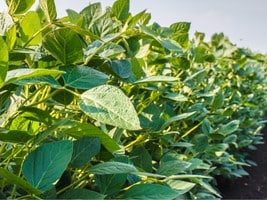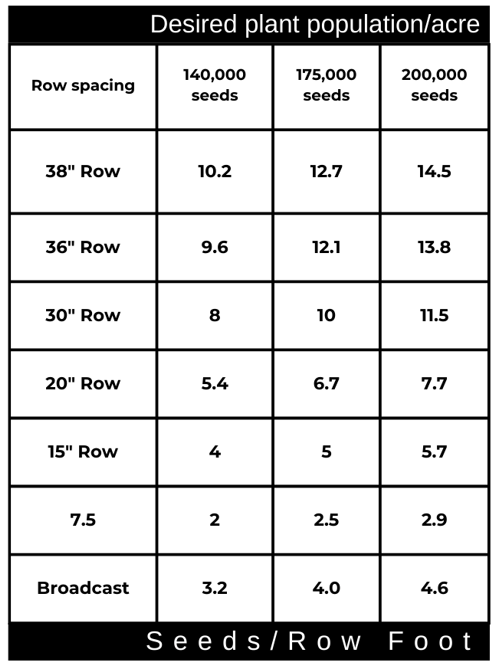Xtendflex®
Xtendflex® Soybean Planting Guide

Fertilizer
The optimum pH for soybeans is between 6.0 and 7.0; 6.5 is ideal. Inoculate soybeans with Bradyrhizobium japnonicum if the soil has either high or low pH, has been water-logged or extremely cold, or has no recent soybean production. Inoculant reduces fertilizer costs, adds yield, and adds protein content in leaves.
Nitrogen is not needed on decent soil if the soybeans are inoculated. Start N in a mix is fine. We recommend inoculant be applied to the seed just prior to planting. Add the inoculant to the seed hopper and stir gently, do not add moisture (check with inoculant label).
For best results, fertilize according to your farm’s soil test as analyzed by your State Extension Service. If you don’t have a soil test, use inoculant and 0-40-70 (NPK units) per acre per year. Soybeans remove a minimum of 40 lbs of Phosphorous and 70 lbs of Potassium. For maximum deer antler and body weight production, you can use 0-70-120 (units). Always store seed in a low humidity environment below 90°F.
Herbicide Application
It is best to start with a clean, weed-free seed bed. Use tillage or pre-plant burndown herbicide such as Roundup (glyphosate only version), Liberty, or Gramoxone depending on your emerged weeds. 2,4-D can be applied as a burndown for Marestail control. Enlist herbicide, which is 2,4-D Choline, is labeled for over the top use on Enlist Soybeans.
Pre-emerge herbicides such as Valor, Metribuzin, Dual Magnum or Prowl can be used at their labeled rate. Apply Liberty or Enlist for increased pigweed/waterhemp control over the top at the labeled rate. Round (Glyphosate-only Roundup or generic glyphosate labeled for soybean) can be applied to the crop at any time, but weeds need to be controlled in the first 3 to 4 weeks to maximize soybean plant growth and for better weed control.
It is important to spray weeds BEFORE they reach 4 inches in height. Adequate spray volume, boom height, speed, and spray coverage is necessary for best results. Always read and follow label guidelines. Some herbicides require additional license for use.
Planting Details
DATE: Plant after the last spring frost when the soil temperature at a one inch planting depth is above 65°F, but no greater than 90°F.
North – approximately late May or early June.
South – approximately late April to early May.
*Check with your local extension service for optimum dates.
Soybeans have hypocotyl emergence where the seed becomes the cotyledons, so it is usually best to plant after a rain. Rain can causes surface soil compaction and crusting which prevents plant establishment.
DEPTH: The recommend planting depth is 3/4 to 1 inch into a moist soil. Do not plant in a dry soil, or in muddy conditions. Put seeds 1/4 inch below soil moisture line, but no deeper than 1/5 inches. If you do not see emergency in 7 days, check the seeds for sprouting as you may need to re-plant.
RATE: Drill or plant one bag per acre. Broadcast 75 lbs per acre. The chart is provided to calibrate your drill or planter based on row width. If planting in less than optimal conditions or heavy deer densities, use the 200,000 plant population and a narrower row, up to 15 inches in width.
ESTABLISHMENT: Plants grow slower in cooler spring temperatures, so use deer deterrents for the first 4-8 weeks, especially in areas of heavy deer pressure or in cooler temperatures.
DRAINAGE: Make sure your soil has been good drainage. Soybean plant growth and nitrogen fixation can be lost when water stands on an area for 3 or more days. Avoid flood prone areas.

